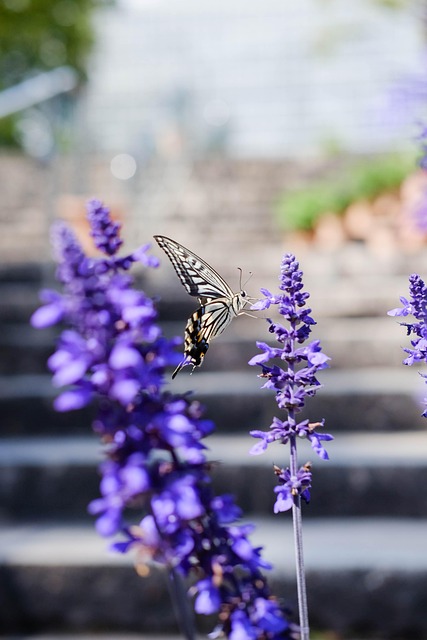After winter, assess lawn damage and prepare for spring growth by dethatching, aerating, enriching soil, and reseeding bare spots with climate-suitable grass seed. Inspect for bare spots, thinned or dead grass, and problem areas, addressing issues early for healthy growth. Kickstart lawn growth with early season fertilization, aeration to relieve compacted soil, and consistent mowing & watering for a vibrant, dense lawn. Proactive spring garden preparation includes assessing damage, dethatching, aerating, fertilizing, over-seeding, and regular maintenance for optimal grass health throughout the season.
Aligned with nature’s rhythm, efficient lawn care involves seasonal strategies. From assessing winter damage and preparing for spring growth to summer maintenance and fall groundwork, each phase is crucial for a lush, vibrant yard. This guide delves into essential practices like fertilizing, aerating, timely mowing, and strategic seeding. Learn how to navigate the seasons, ensuring your lawn thrives with proper care and preparation for the upcoming spring garden.
- Assessing Winter Damage and Preparing for Spring
- – Inspecting the lawn for winter damage
- – Fertilizing and aerating to promote spring growth
- Spring Lawn Care Essentials
Assessing Winter Damage and Preparing for Spring

After a long winter, your lawn is ready to awaken and flourish with the arrival of spring. Before diving into the season’s care routine, it’s crucial to assess any winter damage and prepare for the upcoming growth spurt. Walk across your lawn and look for patches that didn’t receive enough snow cover, as these areas may have been prone to drought and extreme temperature fluctuations. Check for dead grass, bare spots, or discolored patches—all signs of winter stress.
To get your garden ready for spring, start by dethatching and aerating the lawn to improve air circulation and water penetration. Apply a thin layer of compost or well-rotted manure to enrich the soil and provide essential nutrients for new growth. This is also an excellent time to reseed any bare spots with high-quality grass seed suited to your climate and grass type. By taking these proactive steps, you’ll set the stage for a lush, vibrant lawn as spring unfolds.
– Inspecting the lawn for winter damage

After a long, dormant period, winter can leave its mark on your lawn, causing damage that requires attention before the new growing season begins. One of the initial steps in spring garden preparation is to thoroughly inspect your lawn for any signs of winter harm. Look for bare spots where grass has thinned out or died back; these could be areas that received little snow cover or experienced excessive foot traffic. Additionally, check for discolored or wilted grass blades, which might indicate frost damage or nutrient deficiencies exacerbated by the cold.
Pay close attention to perimeters, edges, and any areas sheltered from snow, as these spots often require extra care. By identifying problem areas early in the spring garden preparation process, you can take corrective measures, such as reseeding bare patches, fertilizing to restore nutrients, or applying targeted treatments to promote healthy grass growth throughout the coming season.
– Fertilizing and aerating to promote spring growth

As winter transitions into spring, it’s time to kickstart your lawn’s growth with essential spring garden preparation techniques. Fertilizing is a vital step in this process; applying the right nutrients at the appropriate time promotes lush, vibrant grass. Choose a high-quality fertilizer suitable for cool-season grasses common in many regions during early spring. Spread it evenly across your lawn to provide the necessary fuel for new growth.
Aeration, another crucial task, involves punching small holes in the soil to relieve compactness and encourage air, water, and nutrient circulation. This process helps remove thatch buildup, allowing roots to access essential elements more efficiently. Aerate your lawn after fertilizing to maximize nutrient absorption and ensure a healthy, robust spring growth pattern.
Spring Lawn Care Essentials

As winter’s chill subsides, spring brings a renewal of life to your lawn. Spring garden preparation is crucial for establishing a healthy and vibrant turf. Begin by assessing any winter damage and removing dead grass or debris. A thorough dethatching might be necessary to improve air circulation and prevent matting. Following this, aeration becomes essential to alleviate compacted soil, promoting better root growth and water absorption.
Fertilization is a key component of spring lawn care. Apply a balanced fertilizer tailored for early season growth to provide the necessary nutrients for robust grass development. Additionally, over-seeding can help fill in thin areas and enhance overall lawn density. Regular mowing at the appropriate height, along with consistent watering, will further support your spring garden preparation efforts, ensuring a lush and healthy lawn throughout the season.
As we welcome the warmth of spring, it’s time to shift our focus towards revitalizing your lawn. By assessing any winter damage and implementing essential care practices, you’ll set the stage for a lush, vibrant garden. Fertilization and aeration are key strategies to enhance soil health and encourage robust growth. With proper preparation, your lawn will flourish, providing a stunning backdrop to your outdoor space this season. Embrace these seasonal adjustments for optimal spring garden preparation.
